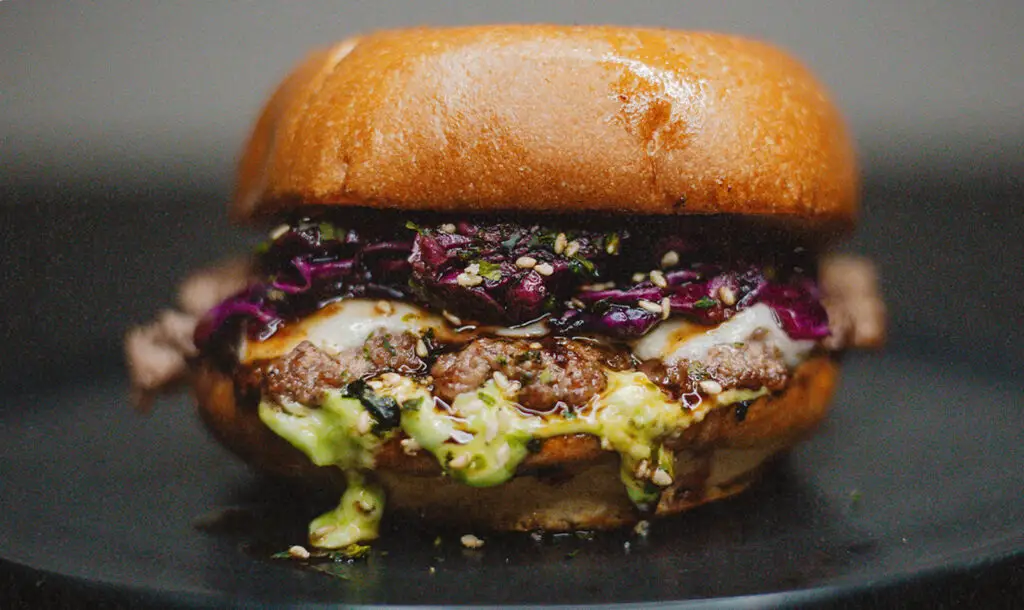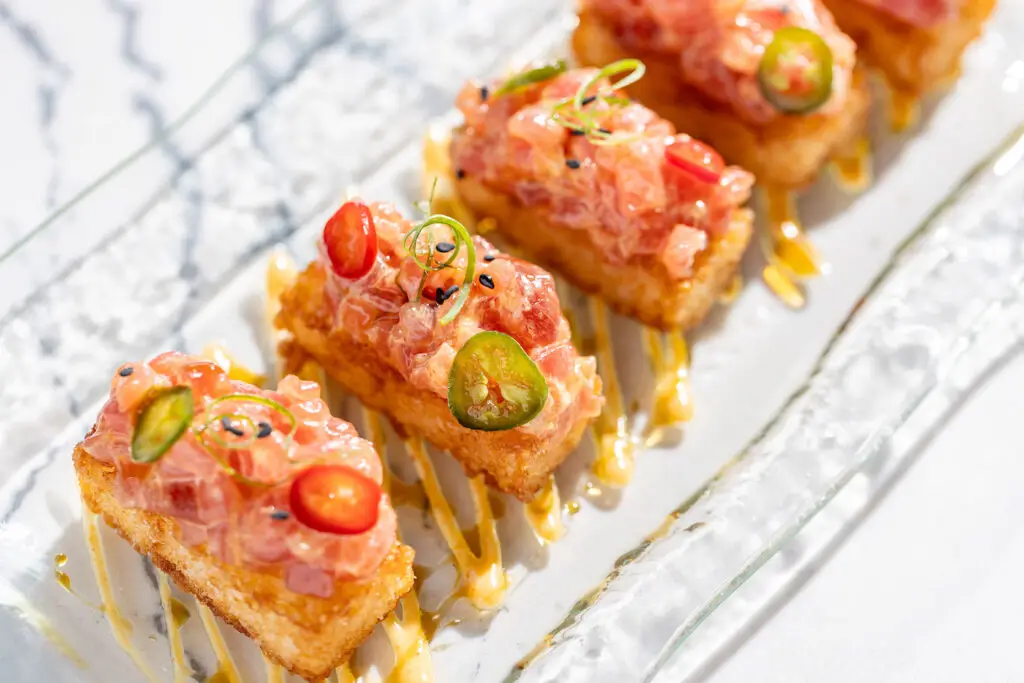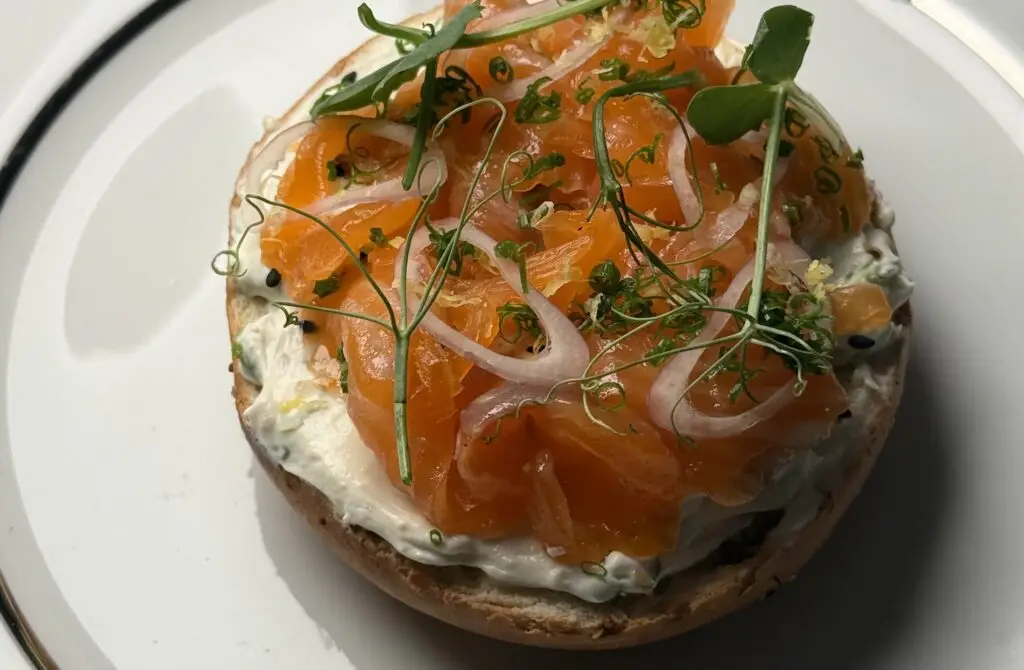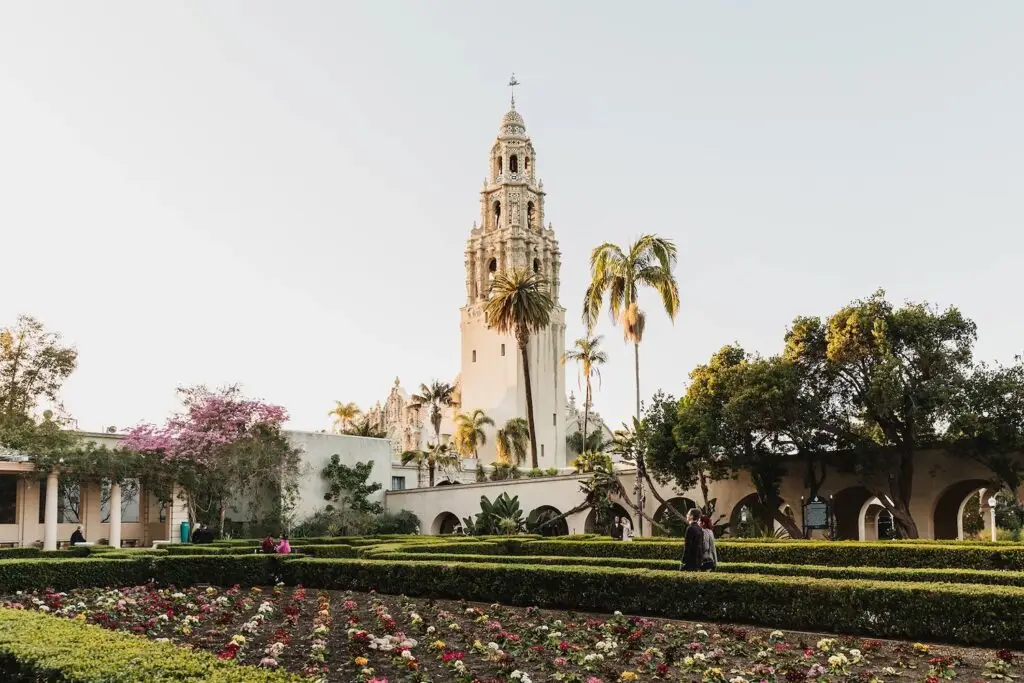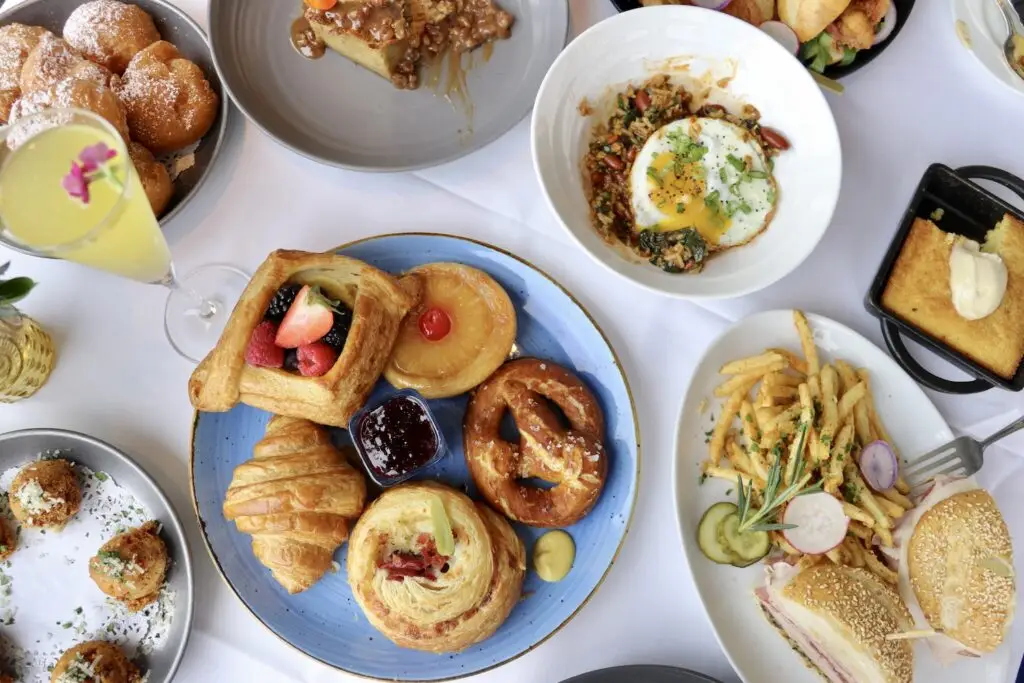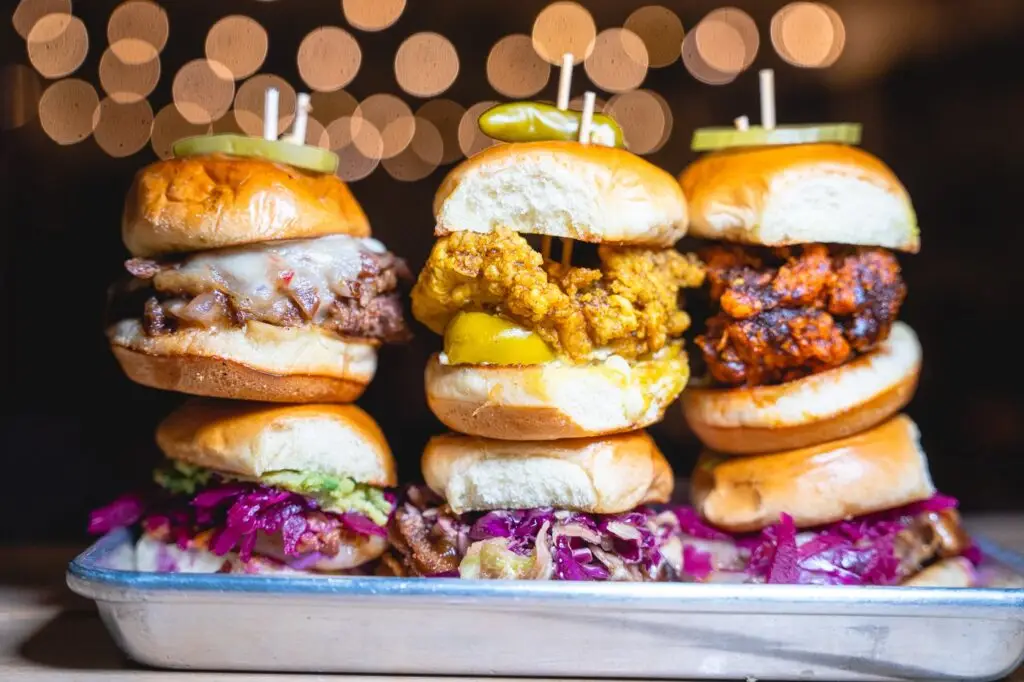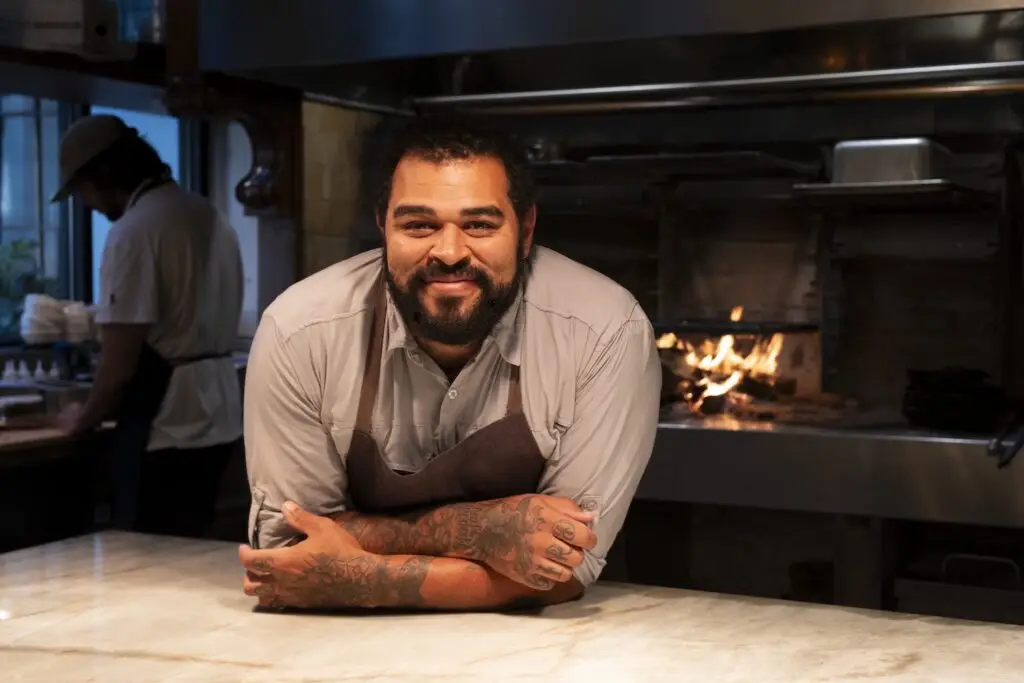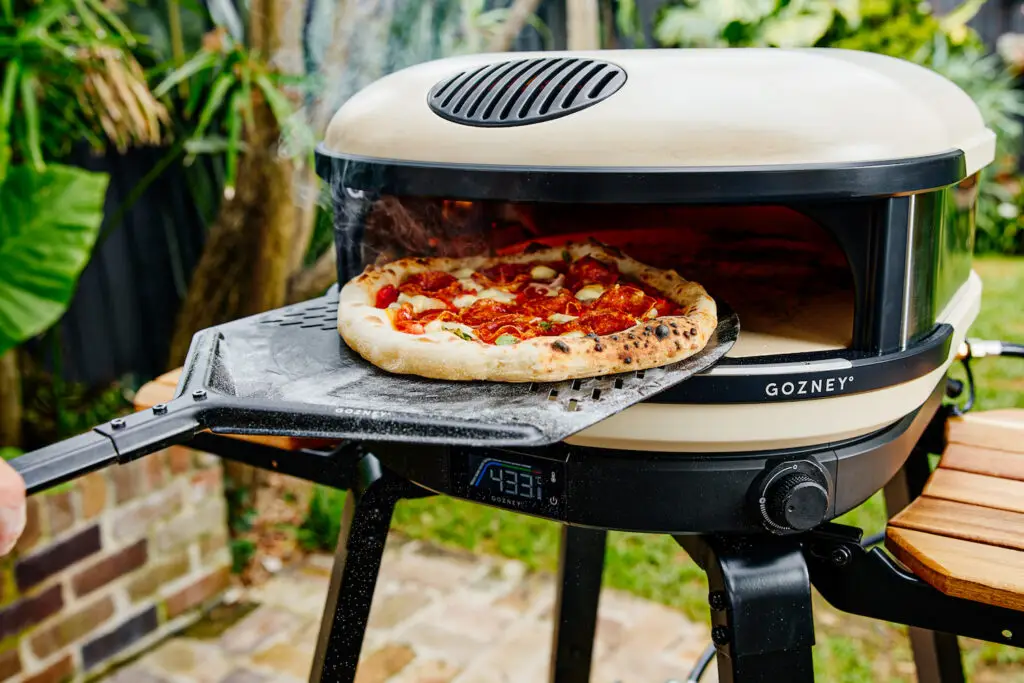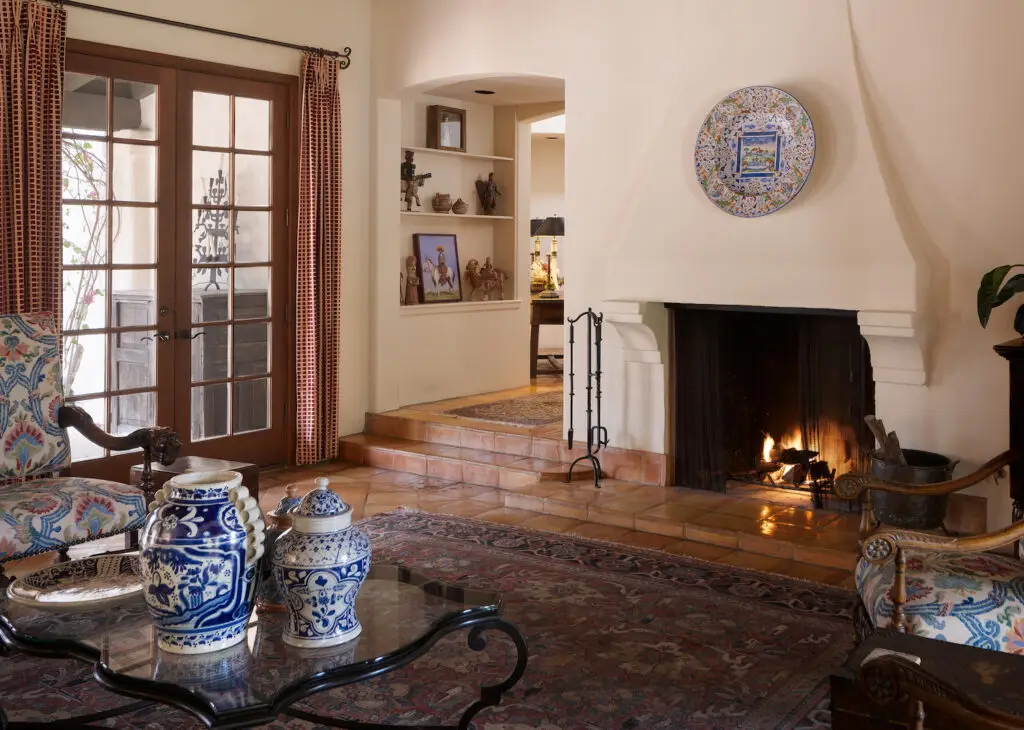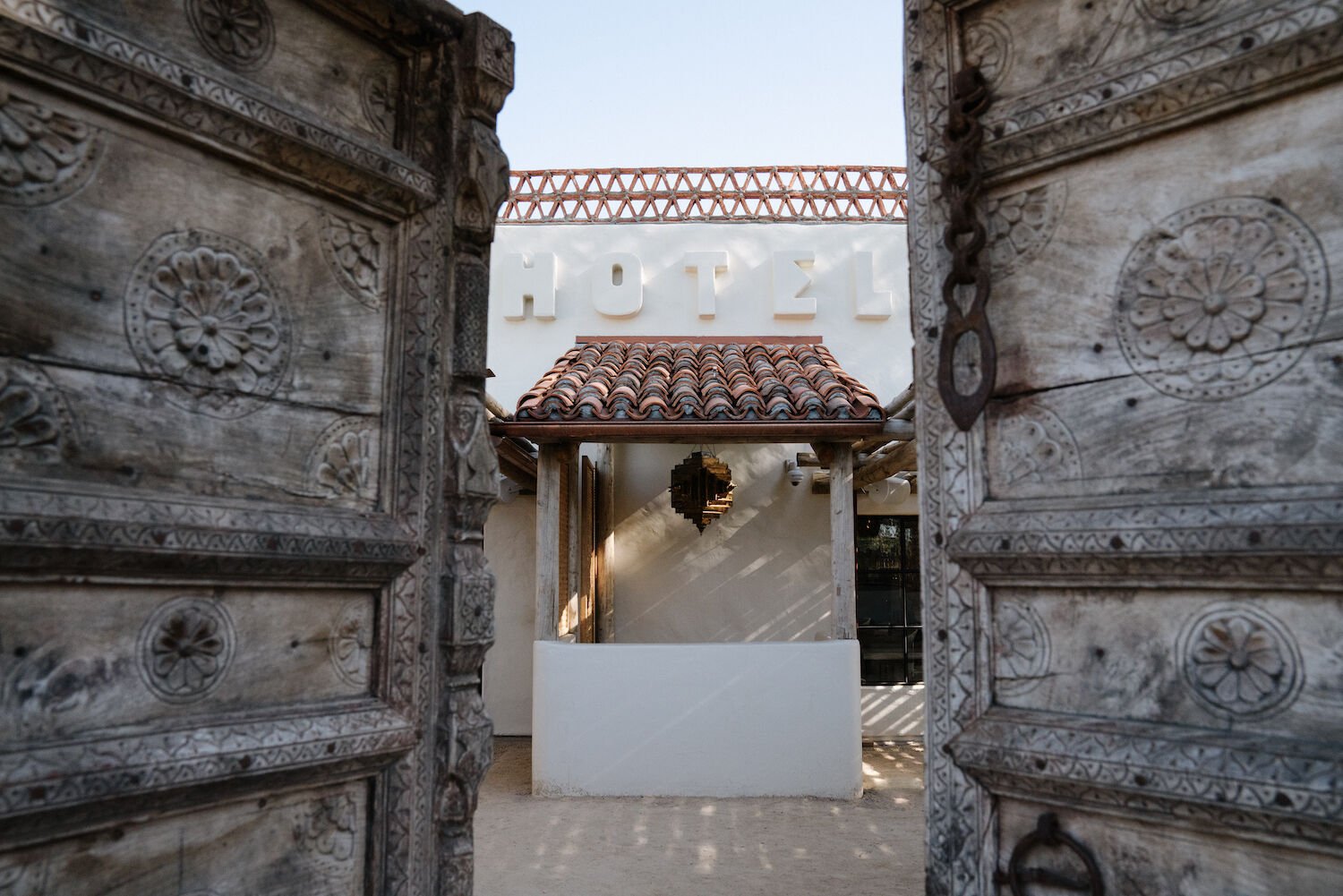
The hotel’s arresting doors come from China, Morroco, and India
Photo Credit: Johanna Siring
Melissa Strukel wanted out of event planning. She longed to sink her design impulses into something bigger, more sustainable. On an early pandemic drive, she was out in the middle-of-nowhere desert—scrub, boulders, border wall—when she spotted a temporarily closed hotel. She got up on her tiptoes and peered over the property’s wall.
“I just knew it,” Strukel says. “This hotel was in my future.”
When she told her business partner, Corbin Winters, about the spot, “I said, ‘Cool,’” Winters recalls. “‘But is it for sale?’”
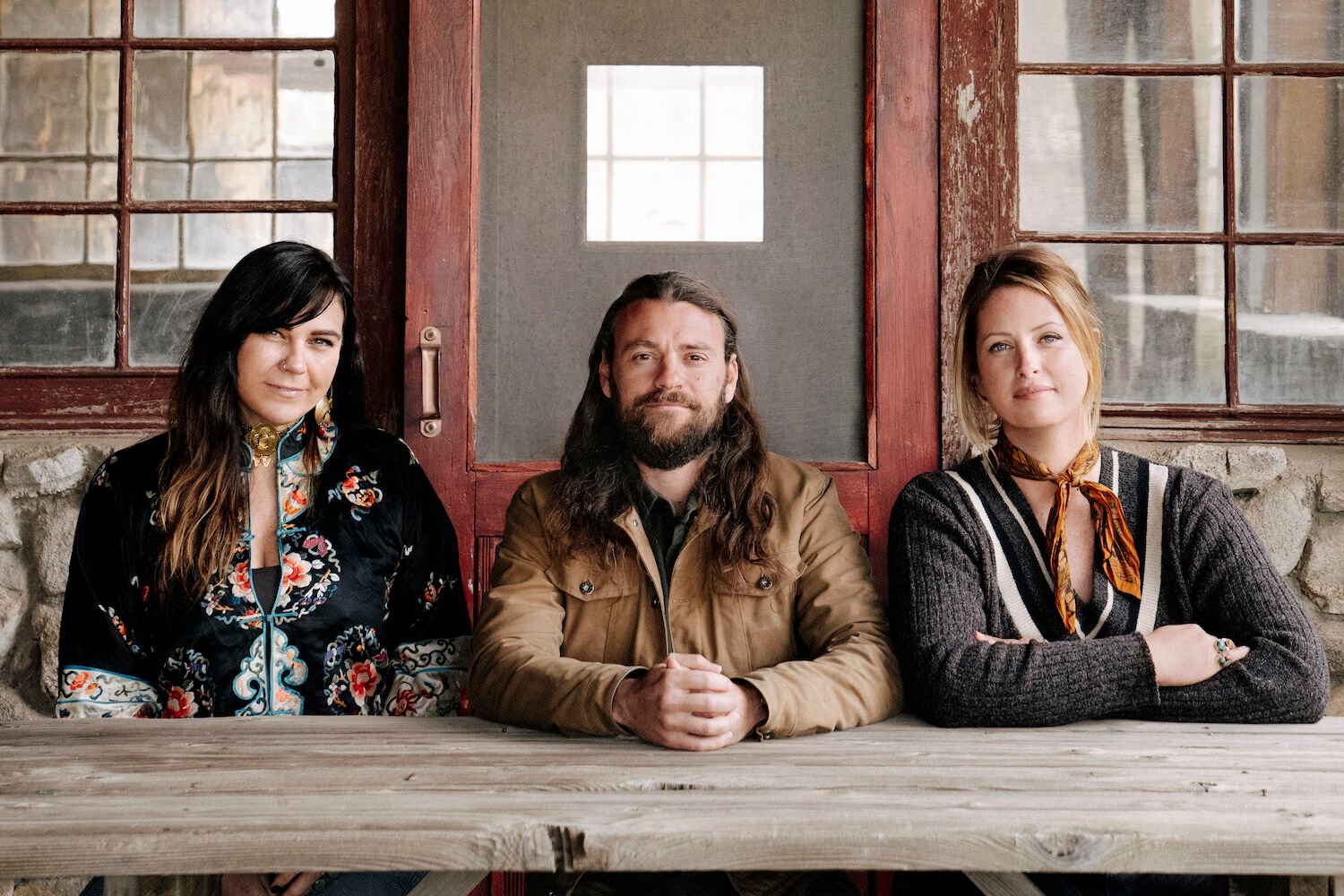
Strukel, Osborne, and Winters have lived and worked in Jacumba Hot Springs since becoming stewards of the town in 2020
Photo Credit: Johanna Siring
It wasn’t yet, but Strukel couldn’t stop talking about it. “My friends were like, ‘We get it, you found a hotel,’” she says. If you believe in coincidences, maybe you’d call it one, but, really, it felt more like fate: Three months after Strukel stumbled upon the hotel, it hit the market.
But there was a significant catch. The hotel, they learned, came with most of the main-street shops, a defunct gas station, an old bathhouse, a dried-up lake, and about 80 percent of the land. They wouldn’t just own the hotel; they’d become stewards of a whole town.
They called on Jeff Osborne, a real-estate dude and former client (they had planned his four-day, boho wedding in a remote, unplumbed meadow a few years back), who they hoped would join their partnership. He was 100 percent uninterested.
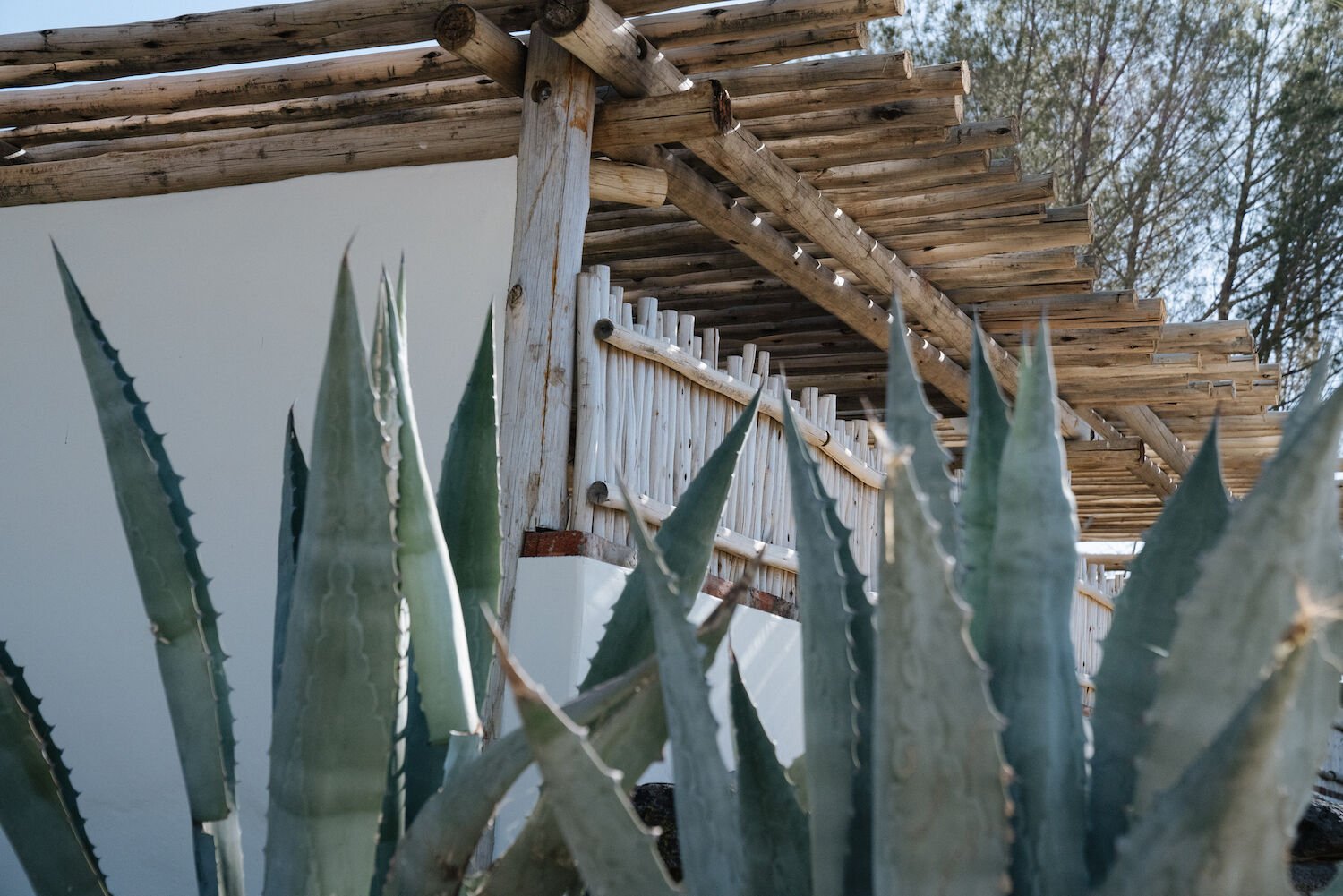
The trio used native plants and locally sourced materials like pumice and obsidian in the hotel’s design
Photo Credit: Johanna Siring
“I said, ‘No, no hotels. It’s a pandemic,’” he remembers.
But Osborne came to check out the place. He saw the town’s vacant buildings—really, the potential in them—and the opportunity to revive a historic place. He camped in the wash, and, by morning, he said, “Let’s make an offer.”
Strukel, Winters, and Osborne closed the deal in October 2020, founded a hospitality group called We Are Human Kind, and moved to town as newly minted locals, starting work on the Jacumba Hot Springs Hotel.
Jacumba Hot Springs, their new borough, is only a little over an hour east of downtown San Diego, with a population in the 500s. It is so close to Mexico that you can discern the color of homes over the wall. In the 1930s, it was a hot tourist destination—folks would come in droves to wander the desert and unwind in the hot springs. Clark Gable was spotted there. Marlene Dietrich, too.
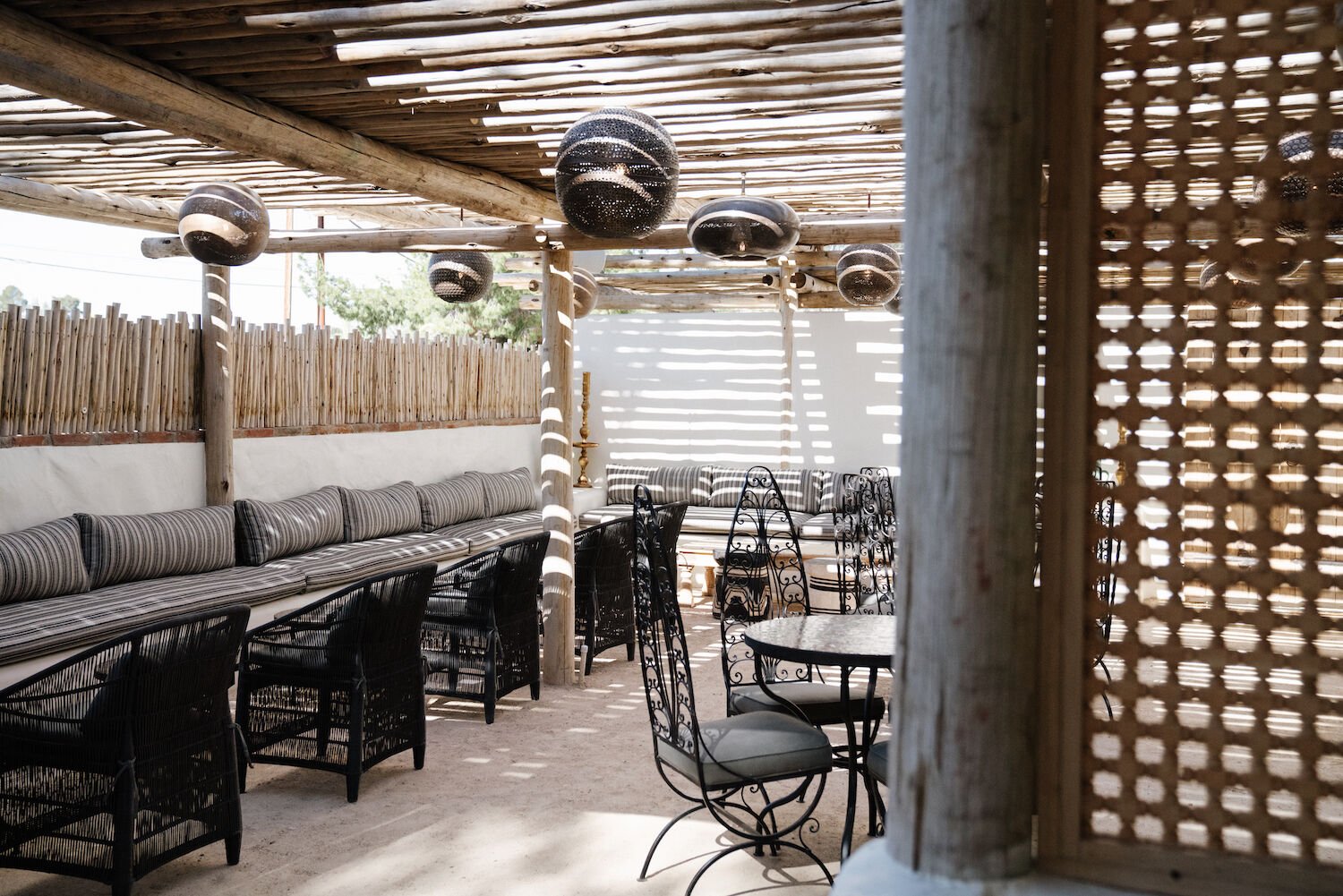
Photo Credit: Johanna Siring
In the 1960s, Interstate 8 was built, skirting the town by two miles. People stopped coming. Jacumba disappeared from the city dwellers’ lexicon. The town began a period of decline.
So before working on the hotel, Strukel, Winters, and Osborne engaged in projects for all of Jacumba. They started a monthly flea market where locals could sell for free. They rehabbed the lake, hacking away overgrown weeds and extracting old tires and other refuse.
The lake is now an oasis, where sparkling water meets sandy shores, a rope swing and ready-to-use kayaks perch on the beach, palms jut upward, and hot water burbles from aquifers nearby. Down the block sit the otherworldly ruins of the bathhouse, which the team has repurposed into a music venue where they host monthly, donation-based, candlelit concerts.
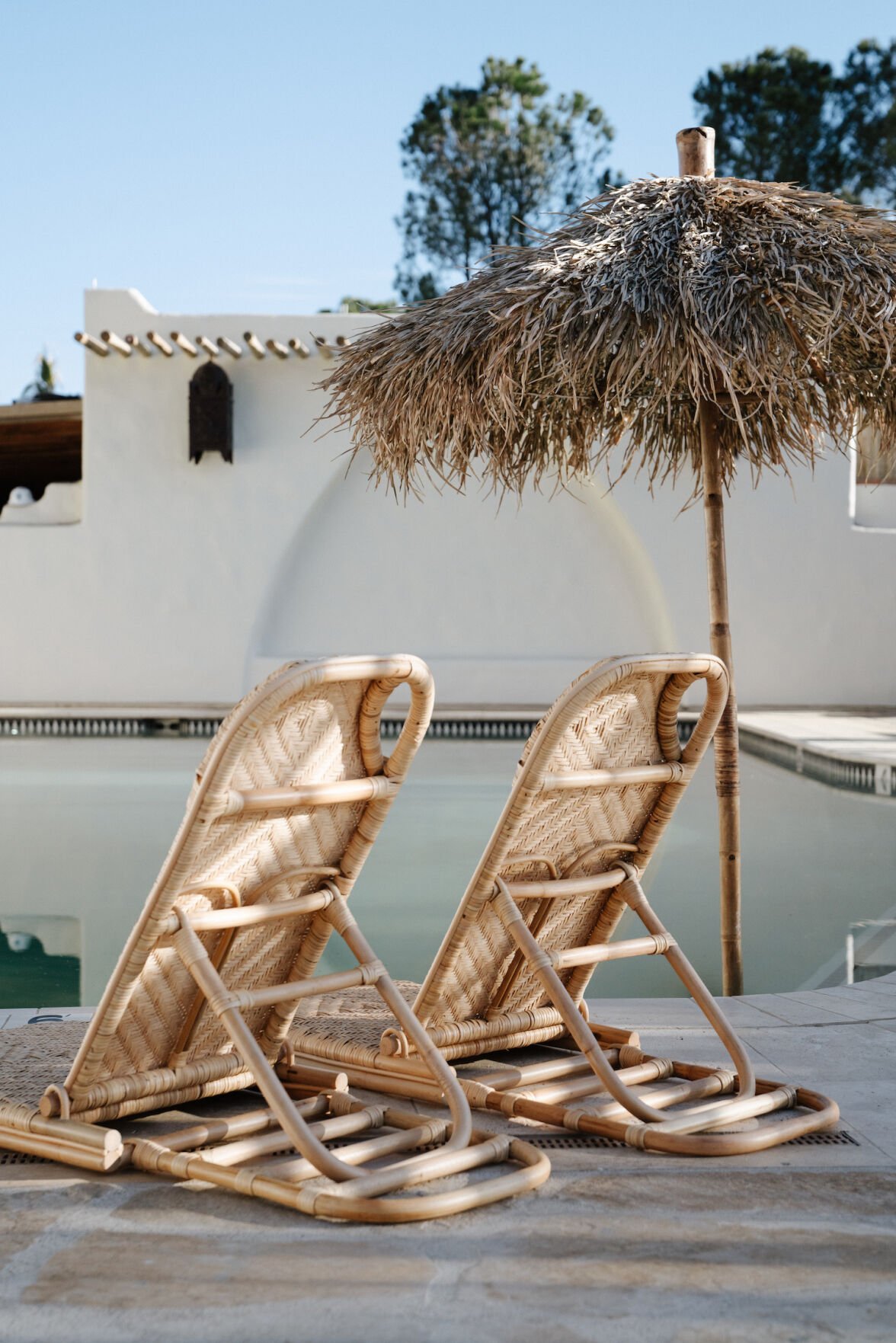
The two mineral hot springs pools on the property are said to have healing properties. Those looking to take a dip can purchase a day pass or membership.
Photo Credit: Johanna Siring
“We knew we needed to do something for the community,” Osborne says. Considering they’d all but bought the keys to the city, the trio wanted to showcase their good intentions to the locals. “Also, in a selfish way, we live here now, too, and we’d like it to feel cool, fun, and connected,” he adds.
Their focus lately has been on the hotel itself, which they began renovating from the ground up in 2021. The reincarnated resort opens in July. Much of the design has been informed by what Strukel and Winters learned planning events—everywhere from Point Loma to Montauk—for more than a decade.
“Essentially, we are trying to make an event that lasts,” Winters says.
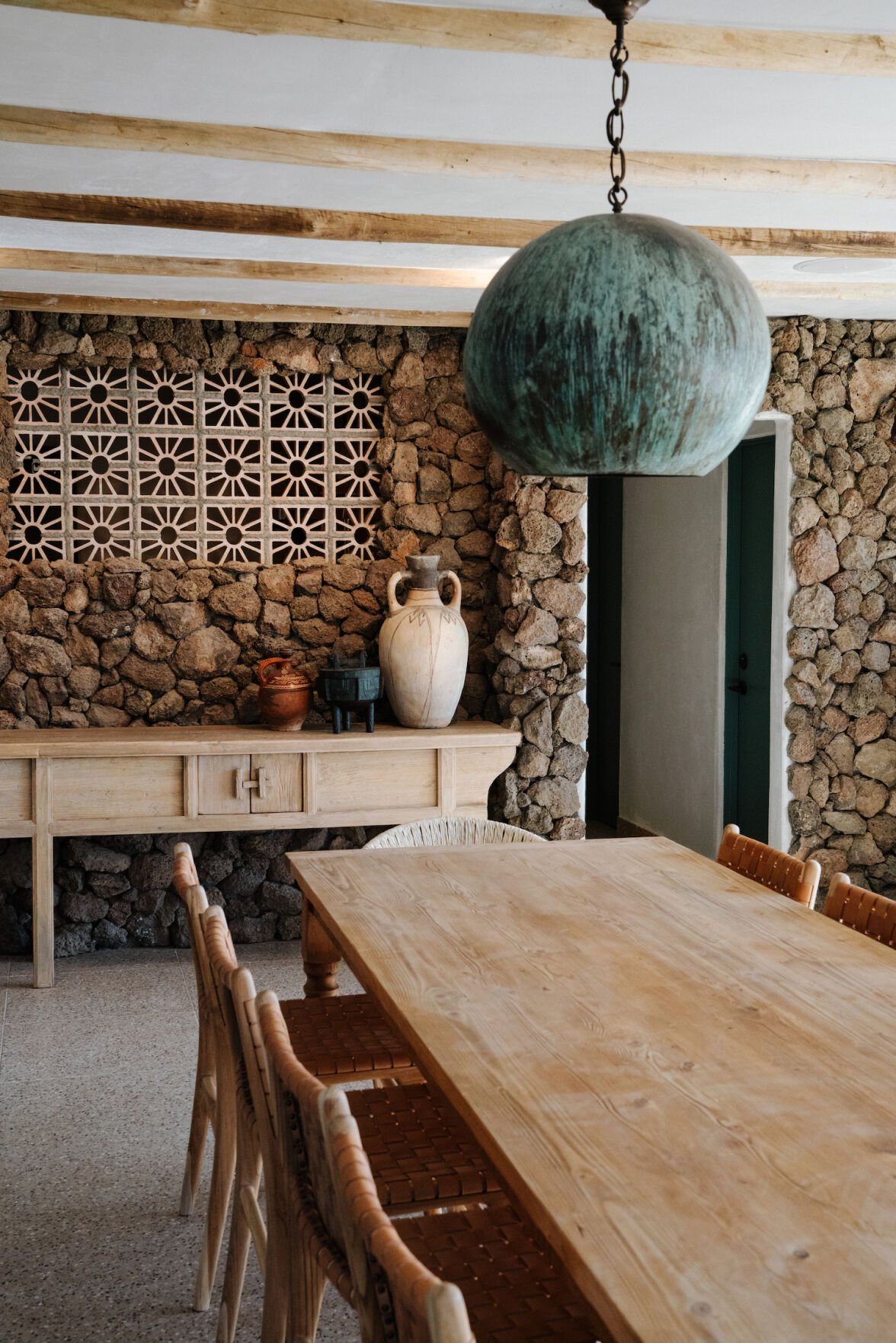
While the hotel itself is adults-only, the restaurant is family-friendly and showcases what Strukel, Winters, and Osborne have coined “international high desert” cuisine from chef Juan Mora.
Photo Credit: Johanna Siring
When organizing soirees, they realized the best nights weren’t necessarily the ones that had the most frills, but ones where guests left feeling like magic had occurred. “We’d be like, ‘Oh my gosh, this feels so good,’” Winters explains. “We’d talk to each other about what it was that was making us feel that.”
At the hotel, creating that magic, as they’ve come to understand it, lurks in the small and often intangible details, like how the shadows from overhead eucalyptus posts shift upon the wall throughout the day and can serve as a makeshift sundial. It’s in knowing that the wind rustling through the giant pines overhead is as much of a character in the overall feel as the hand-plastered, undulating wall encircling the hot-spring pool, and in using a mix of materials to represent all five elements in areas made cozy with plants.
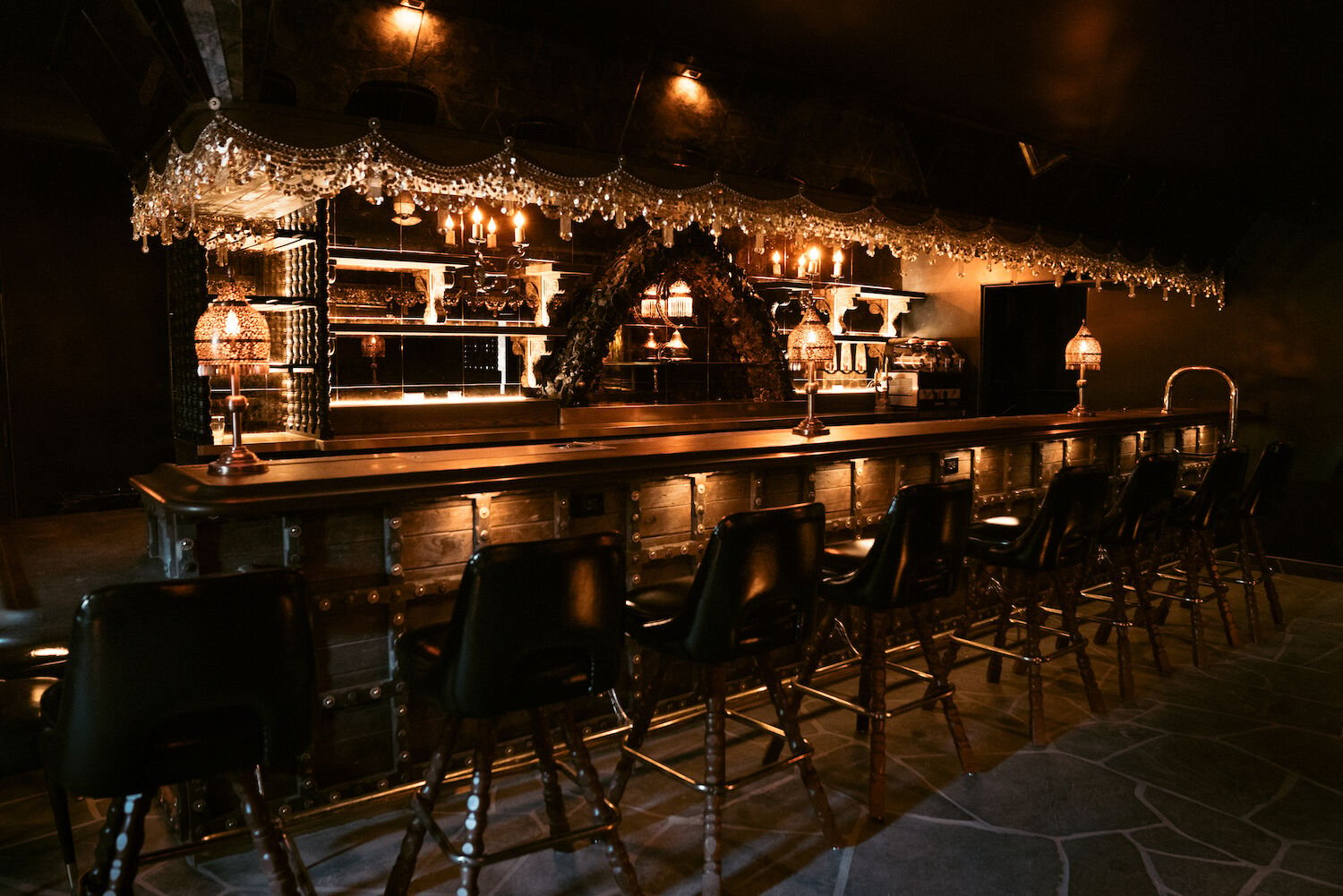
The dark bar is a welcome respite from the bright desert heat
Photo Credit: Johanna Siring
The design is not based on the latest round-up of architectural trends—“We aren’t reading magazines or scrolling Pinterest,” Strukel says—but on how they want people to feel in the space. Doorways are critical to them; they imported half-century-old, hand-carved doors from Morocco, India, and China. They intend for the doors to strike curiosity, as well as appreciation for the intricate craftsmanship. “We want to give people that moment of wondering, ‘Wow, what’s behind that?’” Strukel adds.
They’ve mixed materials from myriad eras and cultures, hoping that, once ensconced, their guests will feel lost in space and time. The bar is windowless, embedded with custom black upholstered booths and oil paintings of nudes (a few of which are hand-me-downs from the now- defunct-but-forever-adored Mission Valley restaurant, Albie’s Beef Inn). Turkish chandeliers hang overhead, and the bar counter is modeled after an Indian dowry chest that they use as a DJ stand.

Guests enter the resort through a hand-crafted, 500-year-old door from India.
Photo Credit: Johanna Siring
“You’re going to wonder where in the world you’re at,” Strukel says, “and in so doing, become much more present.” (If one is present enough, there are architectural Easter eggs to discover, like how an arch meets its reflection in the pool to form an eye shape. When a person sits on the bench below the arch, she becomes the pupil.)
Their design choices reflect a desire to honor their new hometown. The hotel’s fencing is made from native ocotillo stems, and the team also collected lava rock from the surrounding land, using the porous gray stone for planters and as the focal wall in their restaurant. “It’s to pay homage,” Strukel says of the rock. “It comes from the volcano that gave us the aquifers that gives us the mineral water.” Obsidian, a black, glassy stone formed from cooled lava, was also harvested from the desert, tumbled smooth, and then pieced together to form an archway in their bar.
As they open the 22-room hotel to guests, they hope it also leads visitors to rediscover the long-forgotten border town. “Once people come out here, they will feel the magic,” Osborne says.
Many locals are pretty stoked about the revival, too. As an 80-year-old longtime resident put it, “I’ve been waiting for shit to happen in Jacumba.”
The Jacumba Hot Springs Hotel’s grand opening will be held on August 5, and visitors can start booking their stay in early July.
